My nine-year old nephew once asked me, “Uncle, if you were stuck on a deserted island and could only take one with you, would you choose Haleakalā Crater or the Road to Hāna?”
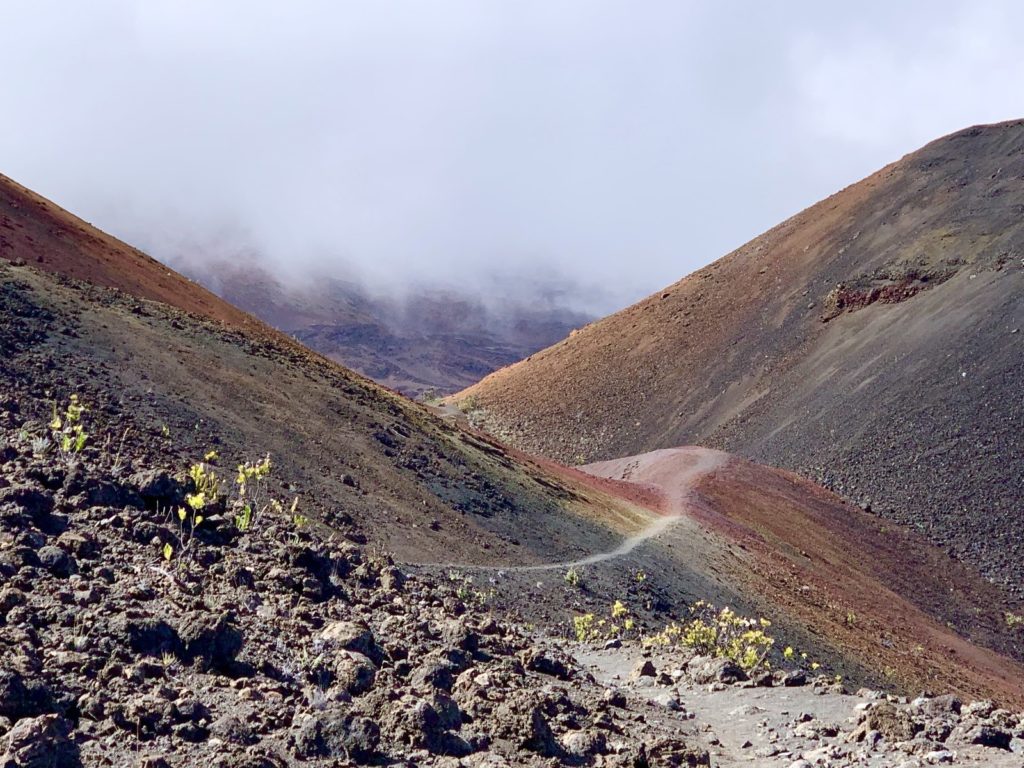
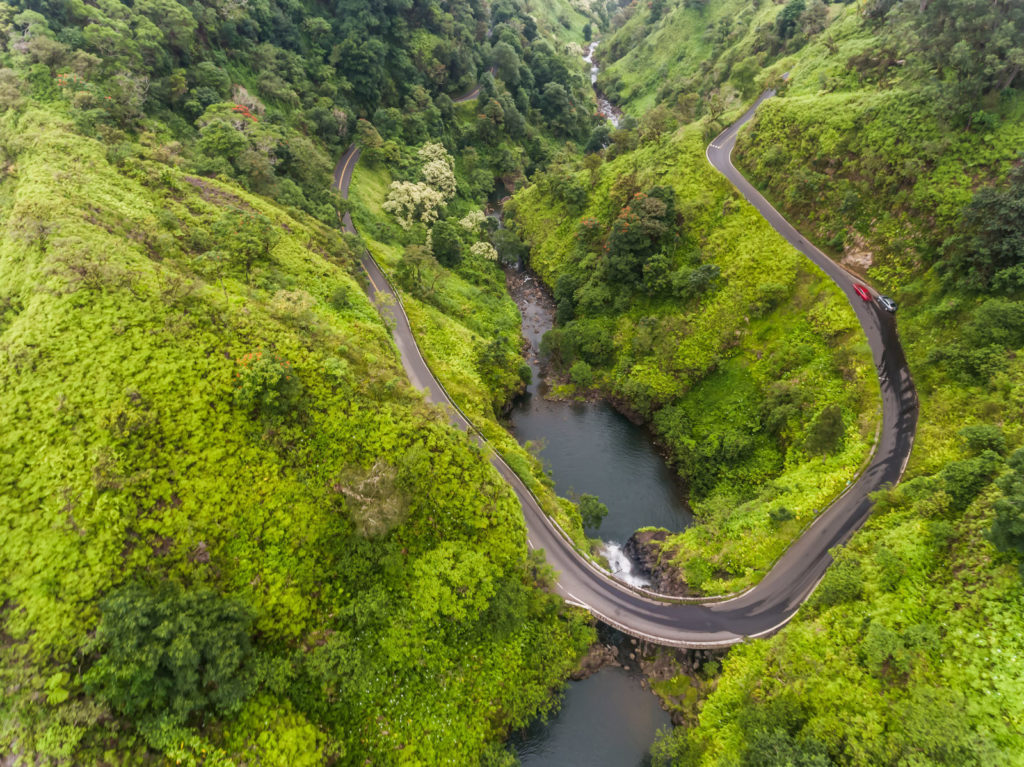
I chuckled before realizing how intriguing a question it was. I was reminded of my days as a concierge, when Maui visitors would ask basically the same question, if less eloquently. The problem most visitors to Maui have, of course, is time. “We’re only here for a week,” they’d say. “and can only pick one. Which would you recommend?” Well, I’m born and raised on this island, and I still don’t have a definitive answer. But let’s try!
Before we (maybe) settle this question once and for all, the reader should know that this will not be a head-to-head list of “most scenic lookouts”, “best eateries” or “types of flora and fauna” found at each. While these logistical concerns are not superficial, they don’t get to the heart of our question. You can be confident that both excursions offer all of the above and then some. But for our purposes here, my aim is simple: how does each of these iconic Maui sojourns make you FEEL?
Haleakalā Crater (HC)
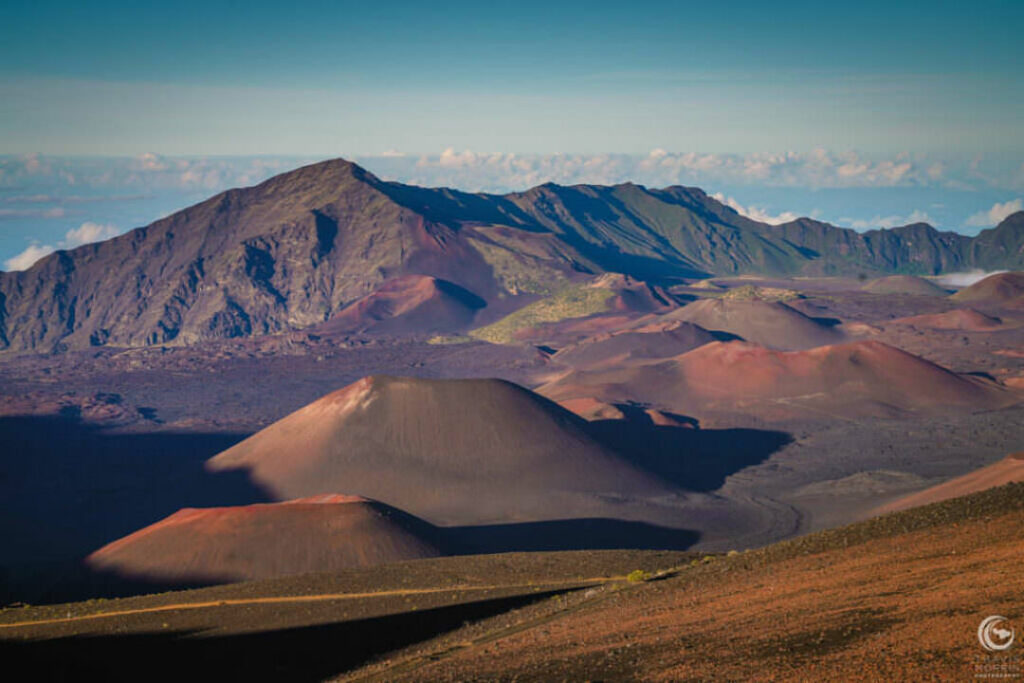
Your encounter with HC begins before you even leave sea-level. Viewed from the west (where most excursions begin), Haleakalā gives the illusion of being a 10K-foot sheer cliff, stark and insurmountable. And yet, even from down here, the summit’s massive telescopes sparkle in the morning light, and mark your destination as an actual place. A goal. “Wow. That’s where I’m going,” you tell yourself.
Thus begins your journey, three kilometers up on 26 miles of road (a world record for climbing the highest elevation in the shortest distance). The ascent is as beautiful as a meandering drive through the country has any right to be. But unlike the Road to Hāna, it’s not the star of the show. The destination is the “star,” and in less than two hours, you find yourself standing on the roof of the world.
What does that feel like? Well, it feels like you are atop the world’s most remote piece of earth. Which you are, quite literally. But being on Haleakalā’s summit really drives this home. There is a keen sense of loneliness here. And yet, at this dizzying elevation, there is also a sense that the rest of civilization– Asia to the west, the Americas to the east– are just a stone’s throw away. In other words, you feel both utterly isolated from the world and strangely connected to it at once.
It’s ALL about the views, you see.
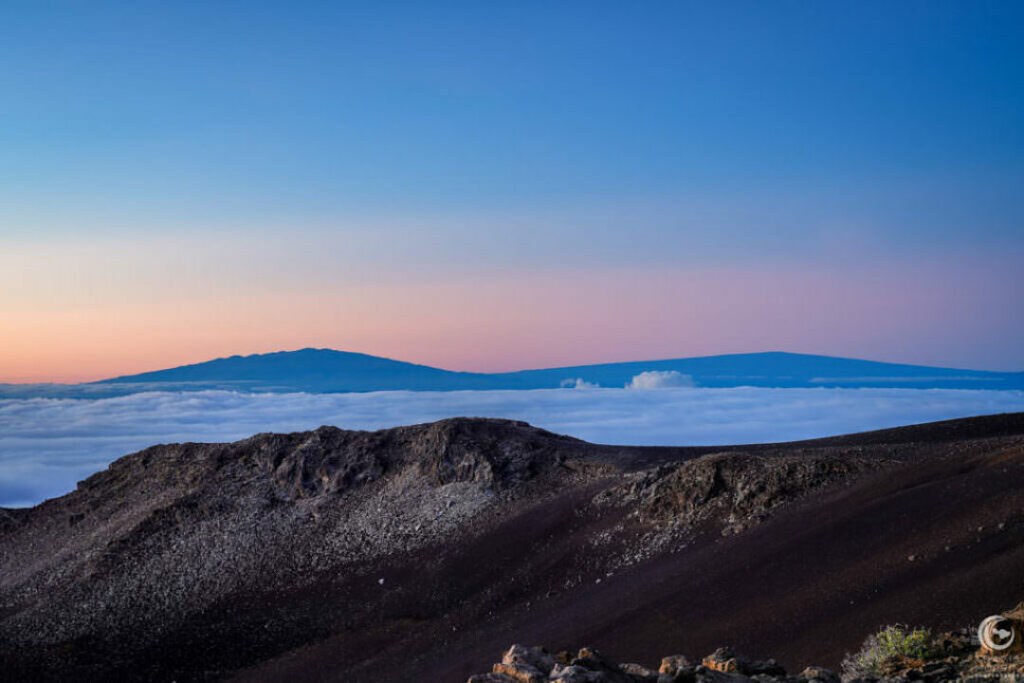
I’ve never actually glimpsed the island of O‘ahu from up here. But I’ve heard that, under ideal conditions, it can be spied, well over 100 miles distant. In the meantime, Maui’s nearer sister-islands seem close enough to touch. To the west, Moloka’i, Lāna’i and Kaho’olawe look as if you could pick them up in your hands like conch shells. To the south and east, Hawai‘i Island seems even closer, though you are most definitely NOT picking her up like a conch shell. She may be younger, but from up here there’s little question who is the “big” sister. Mauna Kea and Mauna Loa — two of the largest, most powerful and majestic single objects on Earth — stare back at you. Whether in approval or reproach depends on the state of your own heart in that moment.
But there are other things to contemplate. It’s the reason why you made the trek and why you’re patting yourself on the back for it now — two opposing views, down into the gargantuan crater itself or west towards the Central Valley (after which “The Valley Isle” is named). Either one makes you feel like you should stop, and sit down. And I don’t mean because of the lack of oxygen here (although that is a thing too, so pace yourself!).
You feel compelled to sit down, as a student sits at the feet — or in this case, on the shoulders — of the teacher. It’s time to take a minute, in recognition of the fact that the “House of the Sun” is allowing you to experience itself, and rightfully expects your reverence and respect. On second thought, you take more than a minute.
The Road to Hāna (RTH)
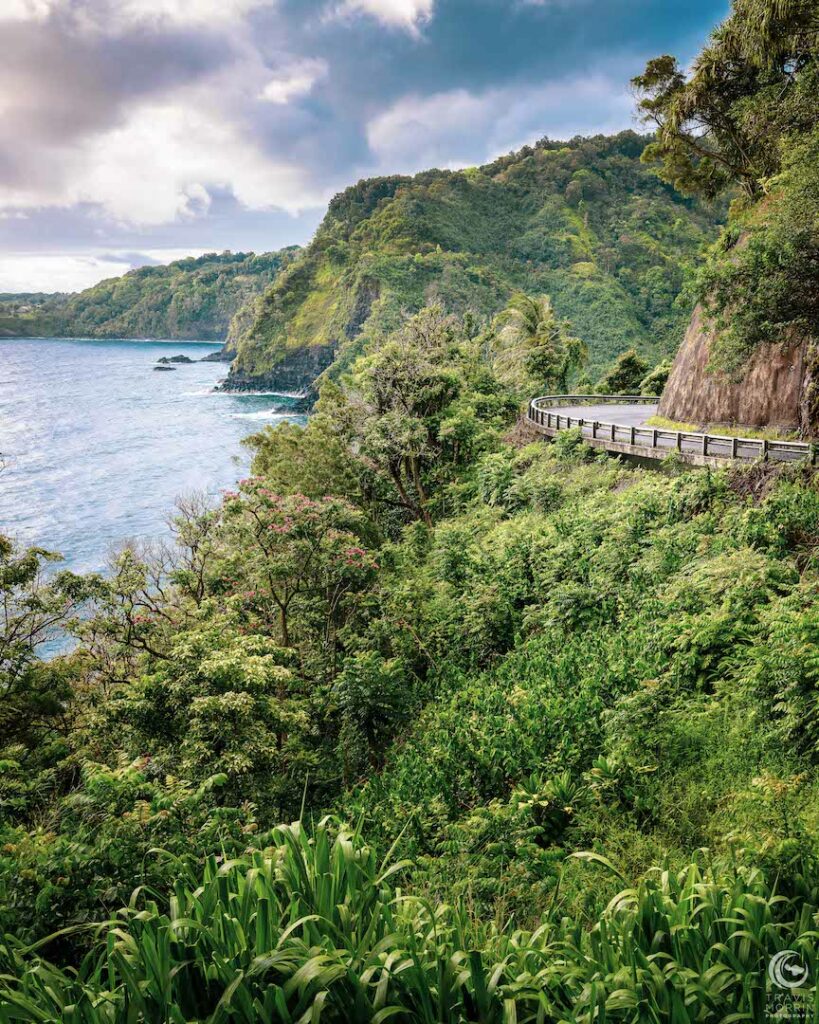
Defensive driving (with Aloha) is paramount when driving to Hāna. This time, the road is most definitely the star of the show. If Haleakalā Crater is the crown jewel of Maui, then the RTH is the strand of pearls, draped beautifully– if a bit haphazardly– around her shoulders.
The RTH is about…moments. For instance, the moment you realize not only that you’ve left civilization, but that you may be entering a new dimension entirely. The exact instant where this happens is different for everyone. I know mine by heart. It’s the moment you know you’re entering the Sacred.
Sacred. But not soft.
You see, it’s also around the same moment that the designated RTH driver unconsciously grips the steering wheel a little tighter, and realizes that her head is gonna need to be on a swivel for the duration of the six-to-nine hour trip. This road is famous for its intimidating curves and one-lane bridges (620 and 59, respectively).
This is good. You should feel intimidated.
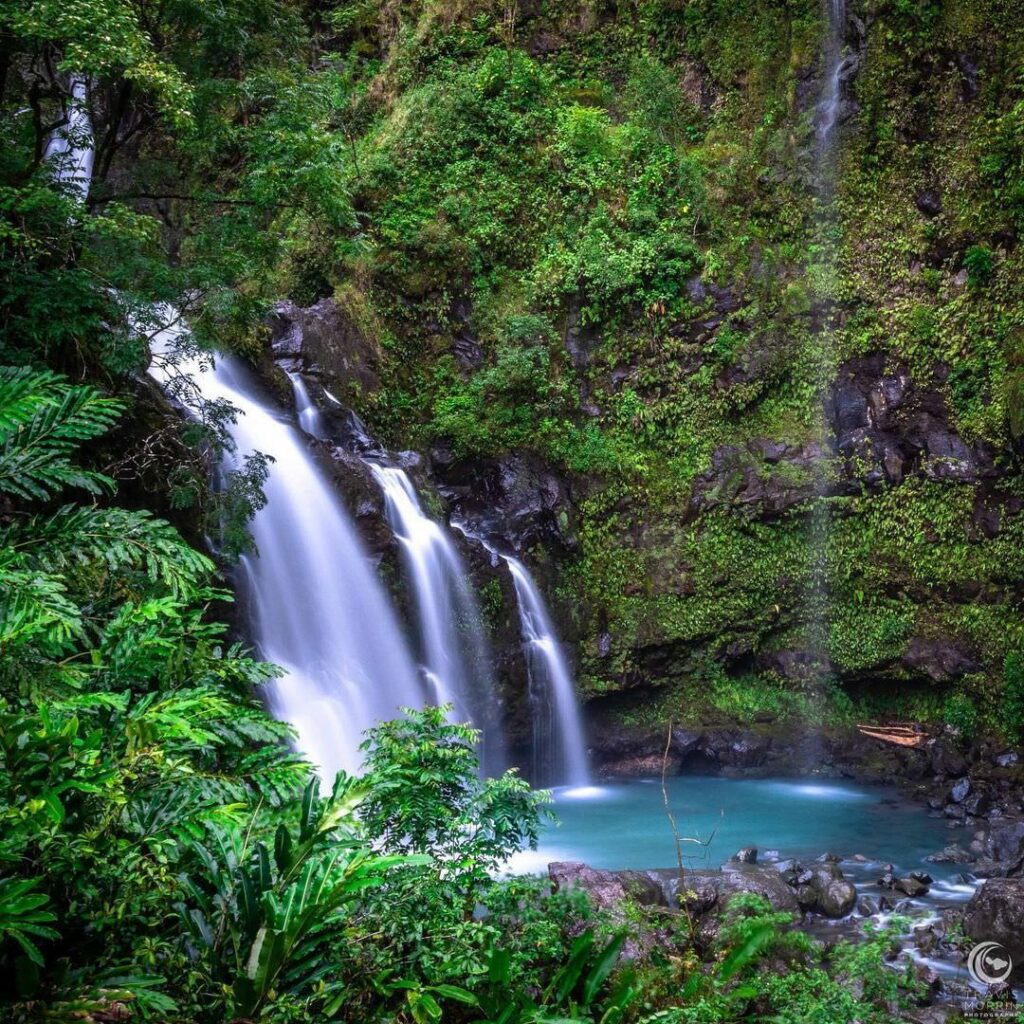
Because the one last thing that happens around this time is the sudden understanding that “there is no turning back.” Not in the literal sense, mind you. Lots of rest stops where you can do that. I mean that your heart tells you there’s no turning back now, that you need to see this through to its conclusion. Hāna has her own siren song. Every cascading waterfall, primordial valley and plunging cliffside is a note in that song; every ancient moʻolelo (story) and piece of history provide a line of melody; and its harmony is found in every native smile and act of Aloha.
In this way, the RTH makes you feel like you’ve committed to something. It demands of you an awareness of the present moment, and relents only when that entire strand of pearls is circumnavigated. You feel duty-bound to these moments, in recognition of the fact that the Hāna Coast is allowing you to witness itself, and rightfully expects your reverence and respect. As a student, at the feet of the teacher.
Soooo…Haleakalā Crater or the Road to Hāna?
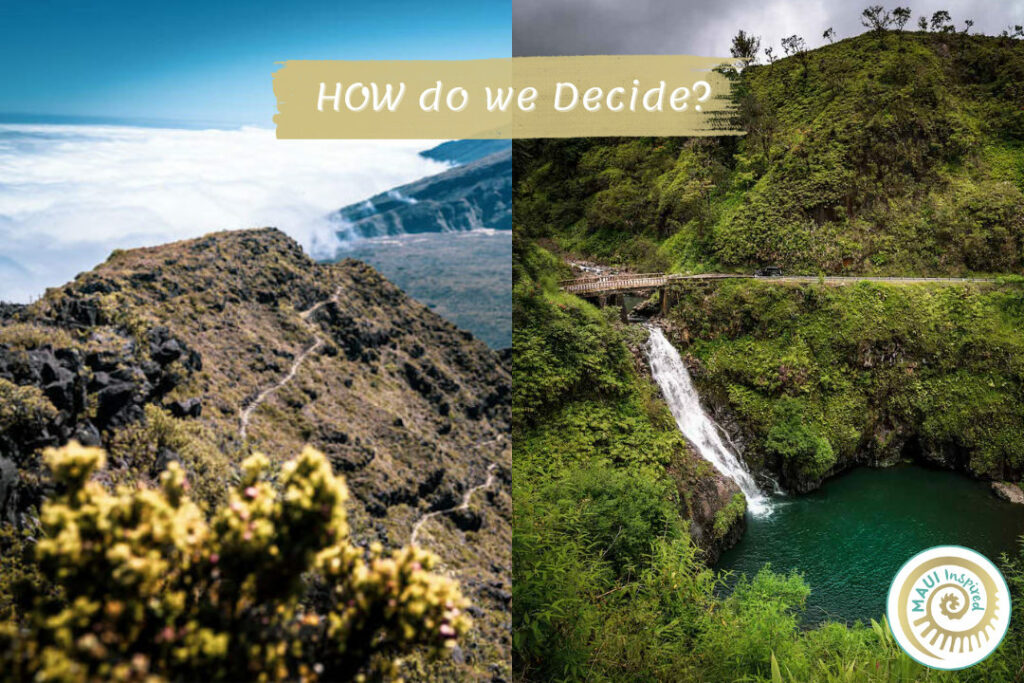
It should be obvious by now that this is all a completely subjective exercise. And I suppose that was the point. Your experience with either — or both — of Maui’s iconic adventures will always be a personal one. For me, the quality of my visits to HC and the RTH has always depended on my own receptivity and openness.
You see, although this article is framed as a showdown between HC and the RTH, the proper question is not “which is the more worthwhile endeavor?” The better question is, will you be bringing along the more worthwhile you to experience it?
And so, if I were on a deserted island and could take only one, would it be Haleakalā Crater or the Road to Hāna? As a Maui-grown native Hawaiian, it feels a bit irreverent and disrespectful to even entertain the question. How does one choose between two equally beloved and cherished teachers? But I said at the beginning I’d do it, so I will. But quickly, like ripping off a band-aid.
The crater. I would choose Haleakalā Crater.
But I reserve the right to change my mind at any time.
See these links for more information on even longer adventures to Haleakalā or the Road to Hanā. #MauiEarth #MauiInspired
